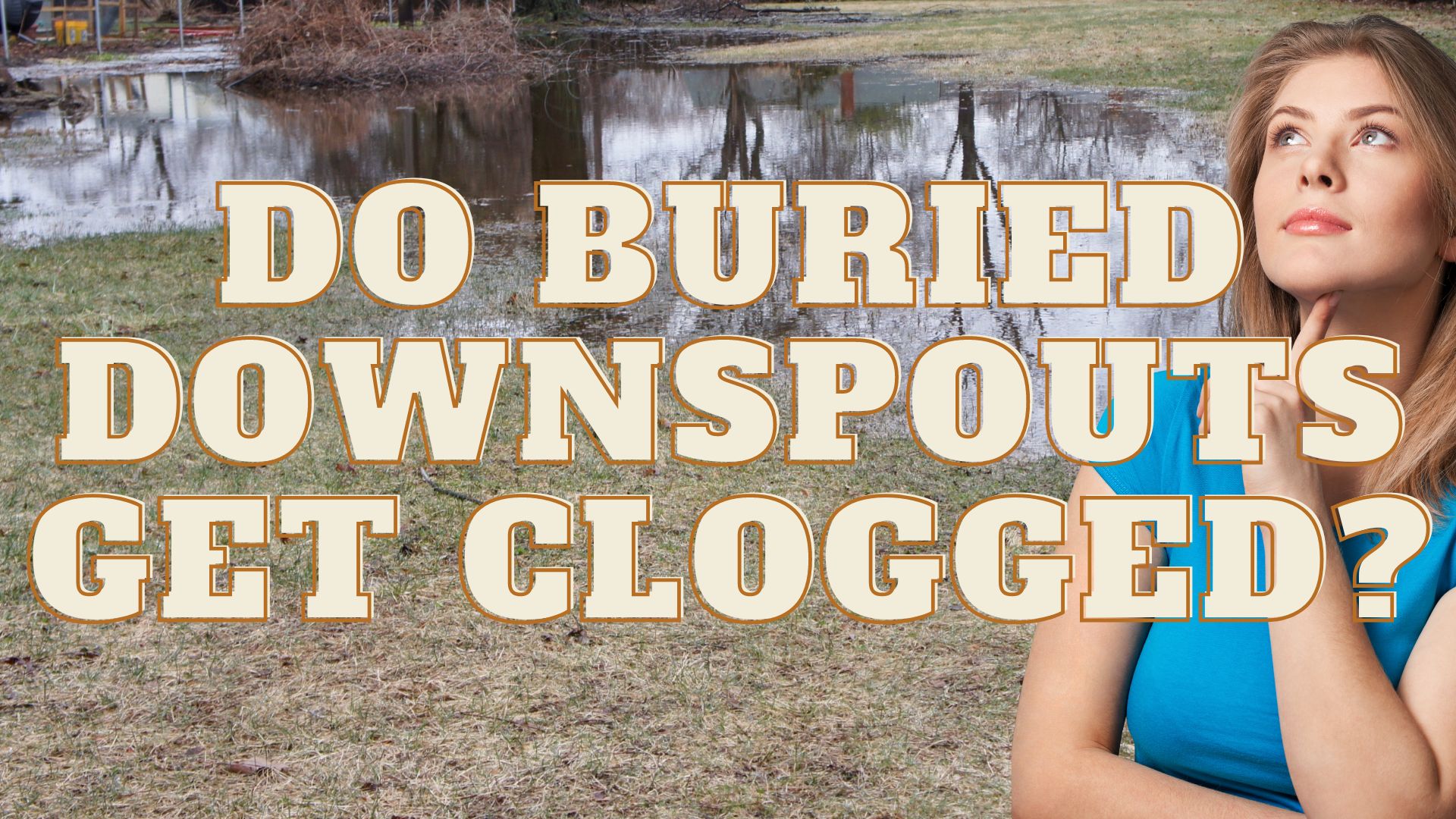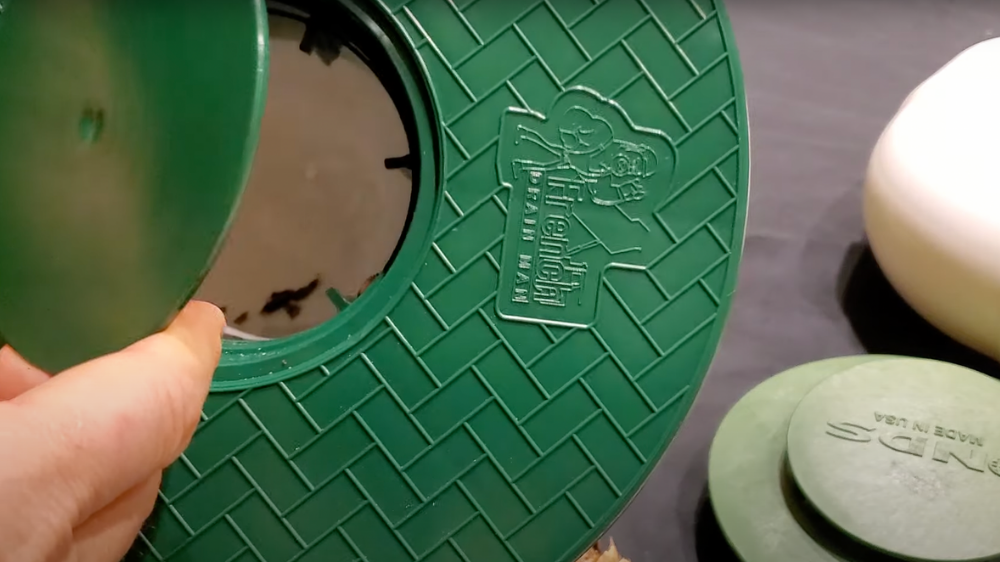Starting a new project around your house and yard can be daunting, especially when it’s for something as important as setting up your yard drainage system properly. French Drain Man will show you how to bury downspouts and provide insider tips from veteran contractors. So let’s get started!
Materials Needed:
- Solid corrugated drain pipe in 3 in. or 4 in. (at least 15 ft.)
- Downspout Cleanout
- FDM 200 year tape
- Pop Up Emitter and Catch Basin (Highly Recommended by FDM)
- Filter fabric 4oz, 3 ft x 4 ft (if using Drain Basin and Pop-up Emitter)
- 4 in. Corrugated to 4 in. PVC Coupler (if using PVC Pop-up Emitter)
OR
Everything you need in one kit:
1. Map and Plan. Bury Downspouts Far Away from the House
The first phase is planning where you will channel the water. Don’t overlook this step as a lot of failed installations start with poor planning.
Pro Tip: Map your discharge point far away from the house
One of the biggest mistakes we see out in the field is not burying the gutter downspouts far enough from the house. Never just run your buried downspout 10 feet away from the house. Big box stores sell pieces that are 10 feet in length, and that can be very misleading for consumers.
The farther your buried downspout is from your home, typically, the more fall you’re going to get. That means that you’re going to empty the downspout line and it’s not going to hold a lot of water. Closer to the house, the ground is really flat, and the downspout line is going to stay full of water. If you can get the line out far enough, you will empty the entire drainage system. When winter comes, there is no water in the line to freeze up.
If you live in a Sun Belt region, you don’t want it full of water because stale, stagnant water is just going to end up giving off a pungent odor. For example, earthworms find their way into pop-ups when they’re full of water and that smells horrible. So, bury your downspouts far away from the house so that they don’t hold water.
Also if you are unsure how to size your system here’s some information on using PF Tabular to Calculate Roof Runoff Water.
Pro Tip: Allow for Slope and Avoid Bellies
Another mistake we see all the time is routing the downspouts in a manor that allows for bellies in the drain pipe. For example, if you run pipe under a sidewalk and then come back up with the pipe, you are essentially creating a sink trap for shingle gravel to be trapped in the line. If you must go under a hardscape feature, make sure you dig the trench low enough to lay the pipe out and have slope. Then debris won’t get lodged in the pipe.
Learn more about problems with drainage bellies and how to fix:
Problems with Buried Downspouts and How to Fix them
2. Dig Your Trench
Once you’ve mapped out your downspout run, it’s time to dig your trench. Before you start your dig take note of where your utility lines are. Not sure? You can call 811 or visit the 811 website. You can also watch our YouTube video on dealing with utility lines.
Then go ahead start digging. Remember having enough slope is key so you’ll need to dig the trench deep enough to where the pipe will have at least 1% slope. Homeowners can simply do a hand dig using garden tools. It’s easiest to do hand dig in the spring. That’s when the soil is saturated and the clay is easier to cut through.
Key Points:
- Mark off Utility Lines
- Dig for at least 1% slope
If you’re wondering how to measure slope, check out our video below:
Pro Tip: Using 3 in. Downspout Pipe will Require Less Digging
Since 3 in. corrugated pipe will give your more velocity and PSI, homeowners can go for a more shallow dig to achieve a 1% or more slope.
Learn More: 3 in Downspout Pipe Provides More Slope and Higher Velocity
Shop: 3 in corrugated pipe for downspouts
3. Connect Gutter Adapter at the House
This assembly will depend on which type of downspout adapter you have.
1. Standard Riser with 90
Your gutter adapter can be cut with a razor blade knife to your existing downspout as is with no modification. If you’re not using a vented clean out, we recommend installing an inline catch basin in your roof runoff system which we will cover shortly. A catch basin is going to help catch more shingle gravel and debris if you’re not installing a cleanout at the house.
2.Vented Downspout Cleanout (recommended)
Update for 2023
New! Downspout Cleanout and Leaf Filter
These videos explain how to install our leaf filter cleanout at house:
4. Lay Your Downspout Pipe
It’s time to lay your downspout pipe in the trench. Remember to allow for at least 1% slope and be sure you’re not setting your roof runoff system up for bellies (horseshoe shape) that will trap shingle gravel and debris.
Pro Tip: Always Use a Wye Fitting If You’re Merging Lines
You many have more than one downspout that needs to go underground. Always use a WYE fitting when merging two drain lines together. Never use a T-fitting. With a T-fitting, the water just slams to a stop. You want to keep water flowing freely. Notice all the Wye fittings that we’re using here in this downspout system.
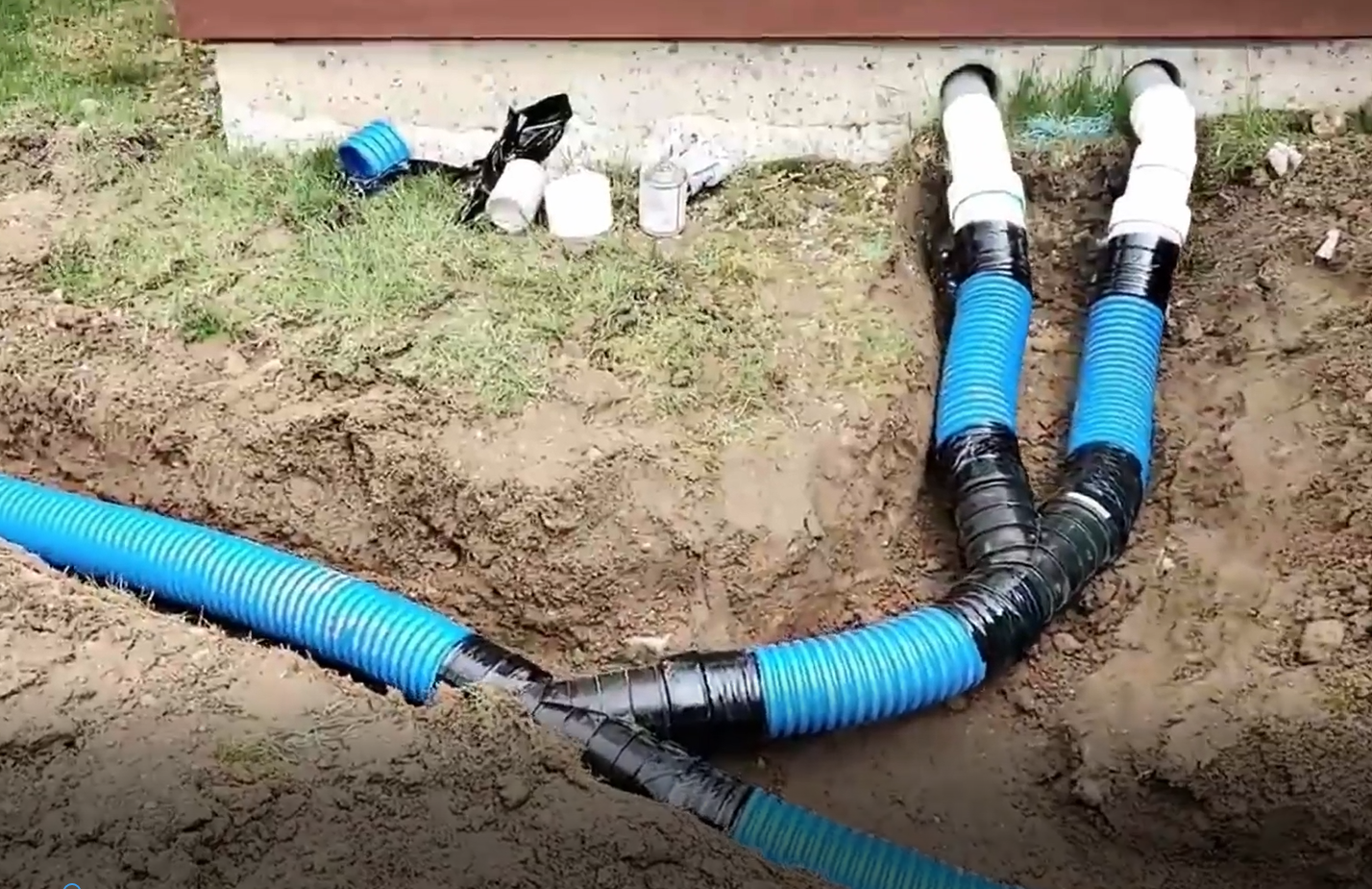
5. Install Catch Basins
FDM’s catch basin has holes drilled into it to allow the water to leech out after a rain event. There’s going to be some water left in the basin. Remember, this is a small basin. It won’t take much to leech that dry. That way, you won’t have a mosquito hatchery or during hot weather, a strong odor that accompanies standing water.
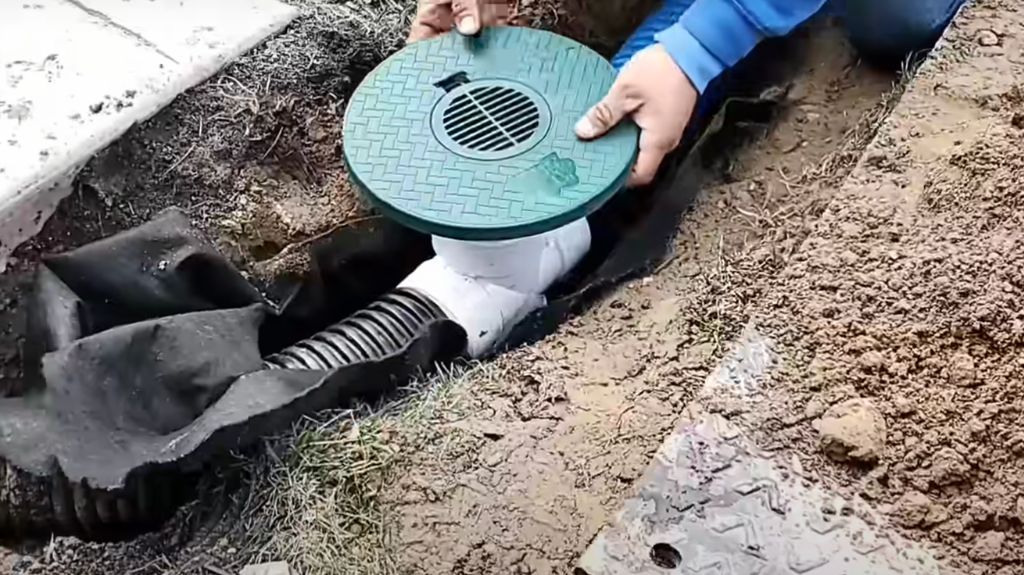
Remember to always put your inline basins at the lowest points that you mark in the yard.
Next, put the fabric down and put the inline basin on top of the fabric. Pack stone on top of the fabric, and set the downspout catch basin on top. Burrito wrap the fabric and pin it. Once you’ve done that, you can put the native soil right back on top of it.
Also, if you didn’t install a vented cleanout at the house, an inline catch basin brings serviceability and convenience to your drainage. These inline catch basins are especially important if you have a shingled roof. Shingle gravel is going to come down the downspout. Then within the first 10 feet, that shingle gravel is going to start to slow down. When the water’s pushing on the drain pipe, you can push the shingle gravel down into a catch basin.
Our inline catch basin is super easy to run a garden hose, a camera, or a jetter through if there’s ever an issue.
6. Install a Pop-Up for Discharge
We install the pop-up emitter the exact same way as our inline catch basins. We also have a downspout pop-up emitter that is our pop-up emitter catch basin hybrid, and it has a sump in the bottom.
Our pop-up was designed to be super easy to get your hand inside. Now, you can go ahead and grab leaves, sticks, pinecones, or anything that floats out of it. Also, it has this big plate around it. The grass can grow up on the plate instead of growing over the discharge line. We’re not having any issues with lawnmowers cutting these plates off. It’s a big enough lid.
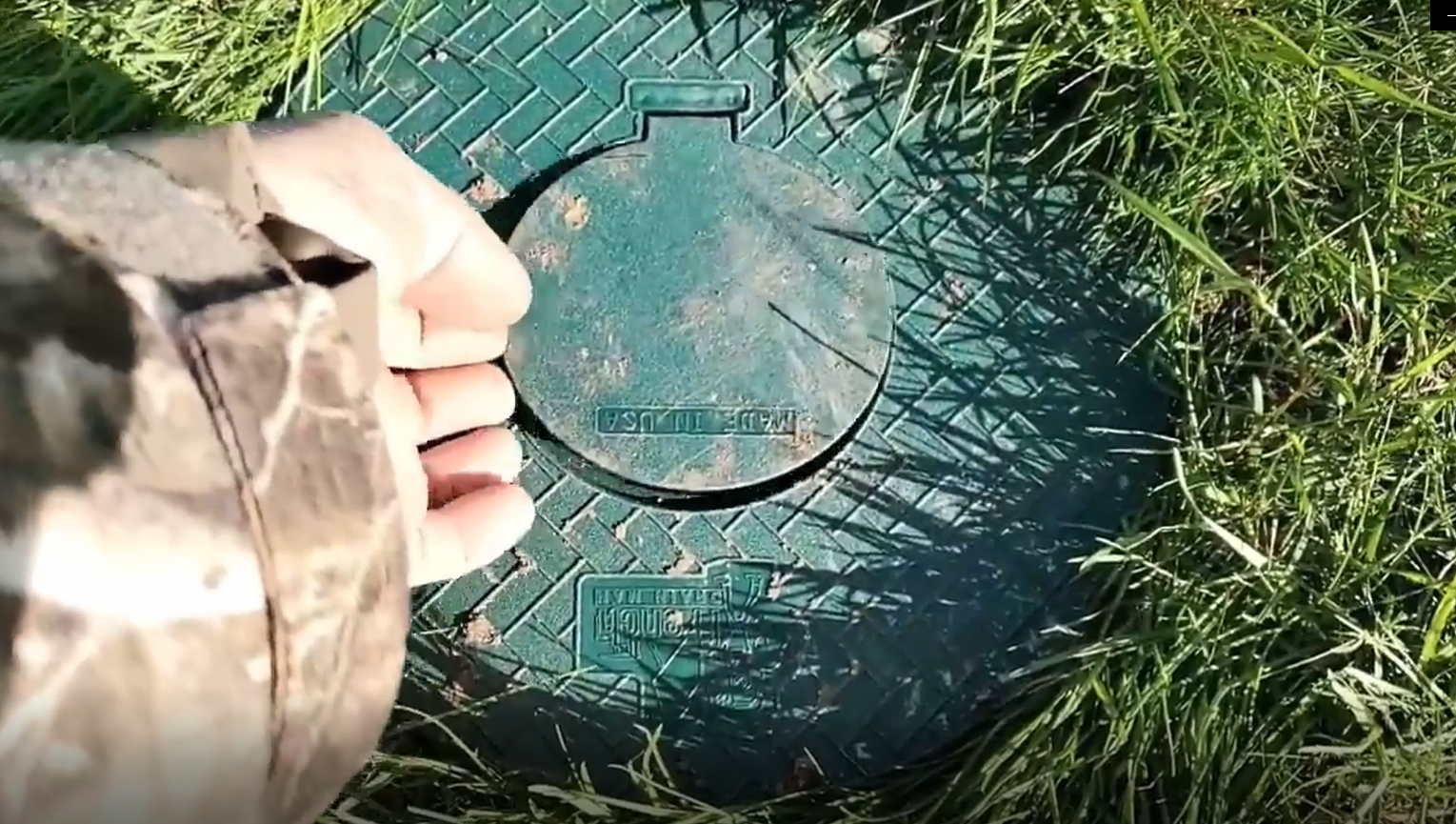
Water has no problem floating through our pop-up during torrential rain events. Under low-volume rains, we have two ports for the water to come out underneath the plate. Literally, it’s a dry well. When this gets super saturated, you can see some water start to swell up. But again, we have two ports, right under the hinge for the water under low volumes. Then, when your downspout is moving a lot of water because of torrential rain it’s not going to have a problem keeping up. You can put four downspouts on one pop-up if that’s what you want to do.
Pro Tip: Use a Soak Away Design for Pop-Up Drains and Catch Basins
Use a soak away design to prevent water from sitting in your buried downspout. Standing water in your pop-up or catch basin invites tree roots, pungent odors, and mosquito hatcheries. You want to design your buried downspouts to soak away any water that’s left behind after the rain event has been moved through the drainage system.
To do this:
Take filter fabric, used as a soil separator, and put it between the soil itself and the pop up.
Then pour the pea stone on the fabric, around the pop up, and on the outside of the pop up. The catch basin and the pop up are done exactly the same way.
At the very end of the line, where water sits at the lowest point of your underground roof runoff system, is where you install your pop-up.
Lastly, I would recommend just cutting the turf off the turf restrictor plate to reset the clock once a year. If you’re responsible about maintaining your roof runoff, you will not end up with flooded basements and flooded crawl spaces.
7. Bury Your Downspout Pipe
You’re almost finished! Simply cover your roof runoff system with the native soil.
French Drain Man Knows How to Bury Downspouts and More
To learn more about how to bury downspouts or more tips from the pros, subscribe to our YouTube Channel. With over 35 years of experience in the drainage industry, we provide the best yard drainage service in Southeast Michigan. From burying downspouts to catch basins and pop-ups, we have you covered on all of your yard drainage needs.







